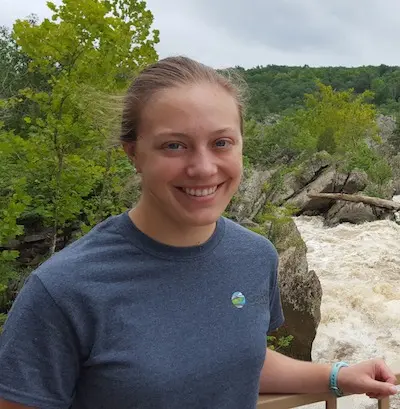Could increasing greenery in cities combat the effects of urban heat islands and, in doing so, reduce the likelihood of extreme rainfall events?
 Steve Loheide
Steve Loheide
A team of UW-Madison researchers is embarking on a first-of-its-kind study to answer that very question. The team consists of Civil and Environmental Engineering Professor Steve Loheide, Civil and Environmental Engineering Assistant Professor Daniel Wright and postdoctoral scholar Carolyn Voter.
The research is a two-year project, funded by a $240,000 National Oceanic and Atmospheric Administration grant awarded through Wisconsin Sea Grant.
Urban heat islands are a result of the spread of manmade surfaces like pavement and building materials as cities grow. Urban green infrastructure can help control runoff, often by increasing the amount of vegetation in urban areas. It can be accomplished in any number of ways, from planting trees and repurposing old paved areas into green spaces to rain gardens around homes and planting grass on rooftops in downtown areas.
Neither heat islands nor urban greening, on their own, are new to researchers. However, Voter says each has primarily been siloed off as different areas of study.
 Daniel Wright
Daniel Wright
“Urban stormwater management has often been a separate branch of science from urban heat islands in terms of how urban heat islands are formed, what the consequences are, and how we can mitigate those consequences,” Voter says. “What we’re doing is thinking about urban stormwater and urban heat islands together and how these two things interact.”
Sunlight that hits vegetation warms water within leaves and helps the liquid transpire into a vapor that can cool the air. In cities, when sunlight hits a street or a rooftop, it’s instead either reflected or absorbed to warm the surrounding area.
“The more pavement you have and the bigger the city, the more severe the heat island,” Loheide says. “It’s a disruption of the natural energy balance.”
While the most immediate effect of an urban heat island—more heat—is obvious, others are more subtle. One such effect is urban rainfall modification—the strengthening of storms as they move over the warmer air around cities.
 Carolyn Voter
Carolyn Voter
Wright says that Milwaukee, Wisconsin, coupled with both an urban heat island and Lake Michigan, is particularly vulnerable to that rainfall modification. Other coastal cities, such as Chicago, are similarly at risk, and the effect may even come into play in Madison, Wisconsin, with its surrounding lakes.
“A lake provides a source of humid air because there’s a lot of evaporation off of it,” Wright says. “That can end up feeding storms that move in over a city.”
In its study, the team will run a range of scenarios, using Milwaukee as a model city, from extreme cases where an entire urban area is greened to more moderate ones with little or no urban greening. Voter says the group also will study urban greening’s impact when distributed throughout a city or concentrated in specific areas, and look at how other factors such as Lake Michigan’s temperature plays into extreme urban rainfall.
“If we did this on a massive scale, and you were looking from a birds-eye view and saw a city that was much more green, to what extent would that reduce the urban heat island and reduce the urban amplification of precipitation?” Loheide says. “There are two things that are going on that affect stormwater runoff: With massive greening, we get less intense rain events, and then that green infrastructure functions in the way that it’s intended—it retains some of that precipitation.”
Wright says that, while rainfall is generally viewed as an input for problems hydrologists work to solve, for this research the team is looking to instead study feedback cycles among the rain, land and atmosphere.
“We’re going to be running very detailed simulations using a weather research and forecasting model,” Wright says. “That’s a model where you can couple what’s happening in the atmosphere, the land surface, and the near subsurface, which is the first couple of meters and is important for determining the potential impact of things like trees and other plants.
The team will adjust the model to better enable it to account for different types of green infrastructure usage. In doing so, Voter says, the team hopes to link all the processes at play to find useful answers as communities across the United States search for sustainable ways to combat runoff from increasingly frequent extreme rainfall events.
“We’re talking about linking atmospheric processes, which are very complex in and of themselves, and also surface runoff,” Voter says. “The fine-scale ways in which the green infrastructure impacts surface runoff can also be complex, so it’s understandable that people have looked at these issues separately. With our modeling capability and our understanding, we feel that we can do a holistic model that combines these and looks at everything simultaneously.”